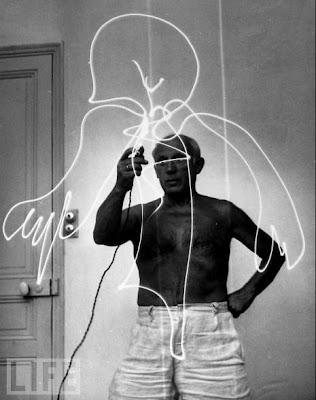For this project i have come up with a concept i call "Light Architecture". I will investigate a variety of different locations and using the technique of light graffiti on a slow shutter speed setting i will attempt create a purely aesthetic set of images in which the space has been changed and manipulated with the use of light.
I feel I have been largely successful in creating an unique aesthetic with my series of four images. The images show spaces that have been changed by the use of light. After framing the images I then used the bulb setting to expose the sensor for the time it would take to draw in the lighting effects with torches. Once the light writing was complete I further exposed the sensor for a few more seconds to attempt to remove any shadows of myself as I drew in the light. I then used Photoshop to correct any over exposure. I ran into a few problems while doing my series. The first was not having any reference to what I was drawing until the shutter closed. I then kept the light writing simple to avoid this problem. The other problem I came across was over exposure of images due to the long shutter speed. To minimalize this I used a small aperture. Of all the spaces I investigated I narrowed it down to four and tried to separated each space as much as possible with my four different shots. The result in a dynamic series of photos, showing and almost third dimension of depth within the two dimensional frames. An interesting bi-product that I did not intend on creating.


















































